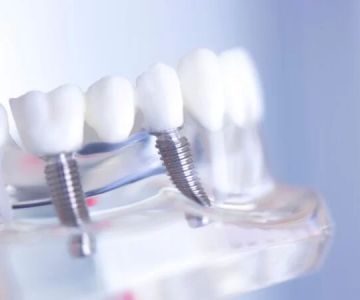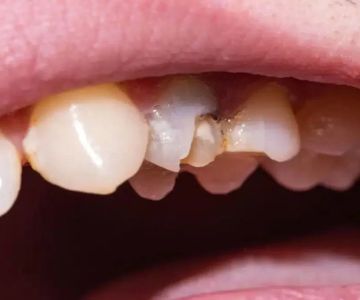- 1-Understanding-Gum-Disease-And-Its-Risks
- 2-Importance-Of-Daily-Oral-Hygiene
- 3-Regular-Dental-Checkups-And-Professional-Cleanings
- 4-Role-Of-Diet-And-Nutrition-In-Gum-Health
- 5-Avoiding-Smoking-And-Other-Risk-Factors
- 6-Stress-Management-And-Its-Impact-On-Gum-Health
- 7-Practical-Tips-For-Sustained-Gum-Health
1. Understanding Gum Disease and Its Risks
Gum disease, or periodontal disease, is a common condition characterized by inflammation and infection of the gums and surrounding tissues. It begins with plaque buildup and can progress to serious issues like tooth loss if untreated. Understanding how to reduce the risk of gum disease starts with recognizing symptoms such as bleeding gums, persistent bad breath, and gum recession.
Research links gum disease to other health problems, including heart disease and diabetes, highlighting the importance of prevention. Early intervention is key to maintaining oral and overall health.
2. Importance of Daily Oral Hygiene
Effective daily oral hygiene is the cornerstone of gum disease prevention. Brushing twice daily with fluoride toothpaste removes plaque, while flossing cleans between teeth where brushes can’t reach. Using an antiseptic mouthwash can further reduce harmful bacteria.
Proper brushing technique and regular replacement of toothbrushes contribute to better gum health. Many dental professionals emphasize consistency and thoroughness as vital components in reducing gum disease risk.
3. Regular Dental Checkups and Professional Cleanings
Routine dental visits play a critical role in early detection and management of gum disease. Professional cleanings remove tartar buildup that cannot be eliminated by brushing alone. Dentists and hygienists also assess gum health and recommend personalized care plans.
Scheduling checkups at least twice a year ensures that any signs of gum inflammation or infection are addressed promptly, reducing progression to more severe stages.
4. Role of Diet and Nutrition in Gum Health
A balanced diet rich in vitamins and minerals supports strong gums and immune function. Vitamin C, calcium, and antioxidants help repair tissues and fight bacterial infections. Avoiding excessive sugary foods reduces plaque formation, a primary cause of gum disease.
Incorporating fresh fruits, vegetables, dairy products, and lean proteins into meals enhances gum resilience and overall oral health.
5. Avoiding Smoking and Other Risk Factors
Smoking is one of the most significant risk factors for gum disease, impairing blood flow and immune response in gum tissues. Quitting smoking greatly improves oral health outcomes and reduces gum disease risk.
Other factors like certain medications, hormonal changes, and chronic illnesses can also impact gum health. Being aware and managing these elements can help in comprehensive prevention strategies.
6. Stress Management and Its Impact on Gum Health
Chronic stress weakens the immune system and can exacerbate inflammation, including in gum tissues. Managing stress through relaxation techniques, exercise, and adequate sleep supports the body’s ability to combat infections and maintain healthy gums.
Studies have found correlations between high stress levels and increased incidence of periodontal disease, making stress reduction a valuable component of gum disease prevention.
7. Practical Tips for Sustained Gum Health
Combining daily oral care, regular dental visits, a nutritious diet, and healthy lifestyle choices forms an effective strategy to reduce the risk of gum disease. Using dental tools like water flossers, maintaining hydration, and avoiding harmful habits enhance these efforts.
Individuals should personalize their oral health routines in consultation with dental professionals. Resources from Dentistry Toothtruth provide valuable guidance and product recommendations to support lifelong gum health.







 Westgate Dental Arts
Westgate Dental Arts Coventry Family Dental
Coventry Family Dental Familia Dental
Familia Dental Dr. Daniel S. Fife, DDS
Dr. Daniel S. Fife, DDS Dentistry At Suburban Square: Michael I. Wollock, DMD
Dentistry At Suburban Square: Michael I. Wollock, DMD Comfort Care Dental
Comfort Care Dental The Importance of Oral Health Education During Pregnancy for a Healthy Pregnancy
The Importance of Oral Health Education During Pregnancy for a Healthy Pregnancy Why Skipping Dental Checkups Can Lead to Bigger Oral Health Problems
Why Skipping Dental Checkups Can Lead to Bigger Oral Health Problems Best Tips for Brushing Your Teeth Properly for Healthy Gums: Essential Techniques for Oral Health
Best Tips for Brushing Your Teeth Properly for Healthy Gums: Essential Techniques for Oral Health Advantages of Porcelain Dental Restorations
Advantages of Porcelain Dental Restorations How Can Diabetes Cause Tooth and Gum Problems? Preventing and Managing Oral Health Issues
How Can Diabetes Cause Tooth and Gum Problems? Preventing and Managing Oral Health Issues Healthy Habits for Promoting Good Oral Health and Hygiene: Tips for a Healthy Smile
Healthy Habits for Promoting Good Oral Health and Hygiene: Tips for a Healthy Smile